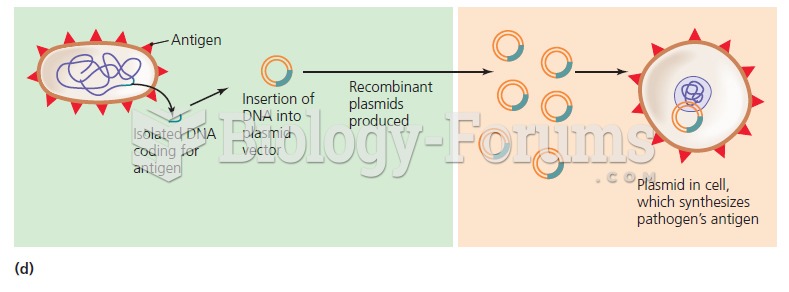Answer to Question 1 A move away from commercial operating systems to Linux and other open-source, free programs. This is currently a slow-moving trend that is gaining momentum. Since many of the programs that schools currently use may not work on these operating systems, it may impact school economics.
A move away from desktop machines to integrated mobile units. Technologies are combining, and some of them are wearable. For example, GPS, cell phones, and watches; blogs with video; courseware that includes telephony software such as Skype. The trend toward mobile computing means that students can access information almost anywhere. This implies that the classroom of the future might be wherever the student is. See the Sample Lesson in this chapter that addresses this trend.
RSS. Short for Really Simple Syndication, RSS allows teachers and students to subscribe to their favorite blogs and podcasts and to get new entries all in one place instead of having to log in to each site. This is an advance in efficiency that will become more common as the number of blogs and other types of posts increases exponentially.
New varieties of search. In addition to the typical Web search, Google search already provides 3-D satellite photos of everywhere, specialized searches of images, scholarly articles, and catalogs, and many other choices for searchers. Other search companies are gearing up for competition, which means that even more types of search are probably just on the horizon.
Social networking. An already exploding trend, social networking (also known as Web 2.0 ) includes sites such as myspace.com, YouTube.com, Friendster.com, Facebook.com, and meetup.com. These sites have over 90 million participants (Barrett, 2006). Teachers can use some of these sites to find experts, for example, Wondir (
http://www.wondir.com/).
Internet telephony (Voice over Internet/VoIP). Programs such as Skype are taking the financial burden out of instant voice connections to people all over the world, changing the economics of connection and the possibilities for schools to use it. VoIP requires a fast connection, so it won't be available in some schools for quite a while. When it is, students will be able to communicate synchronously with peers and experts all over the world.
Ease of use. Technologies are getting easier to use as interfaces become more supportive, more visual, and more user-friendly in general. For example, finding specific items in a Web or site search used to require special symbols and ordering of terms. Now most browsers do not require the http:// before the URL, and symbols are rarely needed. Animation is another example; once the purview of specially trained animators, animation software like Animation Master (hash.com) makes it easy for people to do simple animations. Web sites are using new coding and software to make them more interactive and responsive to users' needs. There are just a few examples of how technology is being made more accessible to a wider range of users.
Answer to Question 2Guideline 1: Be a part of the decisions. Being on the school or district technology committee does take a commitment of time and effort. However, teachers who understand what it takes to integrate technology into learning effectively can help to make sure that technology funds pay for both the hardware and the training that is necessary.
Guideline 2: Explore alternative funding sources. Although experts recommend that 25 -30 of technology budgets be devoted to professional development, it rarely is (Fletcher, 2005). In addition, millions of technology dollars each year are left sitting in organizational coffers, unclaimed by the teachers that they are meant to help. There are a variety of reasons for this, some dealing with teachers' lack of time for grant writing and knowledge of resources, others with the misunderstanding that technology grants are hopelessly complicated to complete and win. Large grants, especially those from the federal government, typically require a lot of work and are not always successful but can offer years of support and extensive funding. Pairing with faculty at universities or local civic organizations who can help with grant preparation and administration can be effective for all participants.
Guideline 3: Take it slowly. Time is a crucial component to teacher professional development (Kanaya, Light, & McMillan-Culp, 2005). Learning to use technology well does not happen quickly, but rather is a process of learning, testing, revising, and evaluating. Just as students should not be expected to become critical or creative thinkers overnight, teachers should not be expected, or expect themselves, to become instant technology integration experts. It may be frustrating to take only small steps, but learning and change are slow processes, and in the end the small steps can add up to large gains.
Guideline 4: Do not do it alone. As other parts of this book have stressed, there are many education stakeholders, both direct and indirect, who can be called upon to work with teachers and students. Stevenson's (2004/2005 ) research shows that these kinds of informal collaborations can lead to effective technology integration in the classroom, and other studies have shown the importance of school and other technology partners to successful PD (c.f, Ludwig & Taymans, 2005). To support teacher PD, parents can be asked to help in all kinds of ways. For example, they can participate in funding drives, be part of dissemination or reading groups with teachers, work with the results of PD by sharing and commenting on their children's electronic portfolios, or make contact with teachers through telephony software such as Connect-ED (Notification Technologies). Peers at the same school and colleagues throughout a district or across districts who have the same needs for PD can form working groups, and administrators can be invited to join to see the effect of the efforts. Even students can support teacher PD by being willing to try new ideas and tasks and to participate honestly and openly in their evaluation. Because learning is social and teachers are already isolated enough in their classrooms, PD should happen with the support and participation of others.







